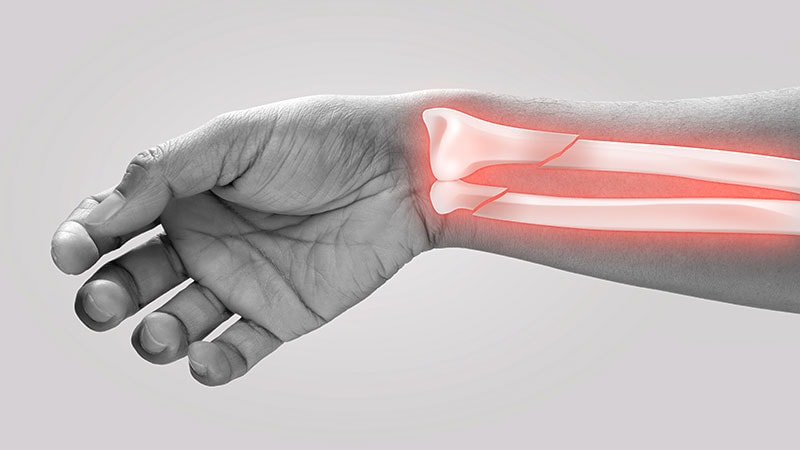Testosterone Treatment Increases Fracture Risk in Hypogonadal Men
Temel Kavramlar
Testosterone treatment in hypogonadal men may increase fracture risk, contrary to previous beliefs.
Özet
The study focused on the impact of testosterone treatment on fracture risk in hypogonadal men, revealing unexpected results. Here is a breakdown of the key points:
Study Results:
Testosterone treatment led to an increased incidence of fractures compared to a placebo.
Fracture sites were associated with low bone mineral density.
The study highlighted the importance of considering the risks of testosterone treatment in older men with hypogonadism.
Study Design and Participants:
The study involved 5204 participants with hypogonadism.
Participants were randomized to receive testosterone gel or a placebo.
Characteristics between treatment and placebo groups were similar.
Fracture Risk Findings:
Testosterone treatment group had a higher rate of clinical fractures.
Common fracture sites included ribs, wrist, and ankle.
Fractures were associated with low bone mineral density and increased mortality risk.
Potential Explanations:
The study did not explore mechanisms explaining the increased fracture risk.
Behavioral changes due to testosterone treatment might have contributed to the risk.
Increased physical activity or risk-taking behavior could explain the higher fracture risk.
Recommendations:
Authors suggest that the risks of fractures outweigh the benefits of testosterone treatment.
The study advises against treating age-related hypogonadism in most men.
Testosterone Increases Fracture Risk in Hypogonadal Men?
İstatistikler
"After a median follow-up of 3.19 years, 3.50% (91 participants) of those in the testosterone treatment group experienced a clinical fracture compared with 2.46% (64 participants) of those in the placebo group (hazard ratio [HR], 1.43)."
"Testosterone treatment group also had higher rates than those in the placebo group of non–high-impact clinical fractures (HR, 1.32); all clinical fractures, including those that were excluded (HR, 1.52); and clinical fractures among participants not taking osteoporosis medication (HR, 1.41)."
Alıntılar
"Testosterone might have affected behaviors such as engaging in physical activities associated with fracture risk."
"The increased risk of fracture [with testosterone treatment], in addition to the increased risks of atrial fibrillation and pulmonary embolism outweigh the benefits of improved sexual function and small improvements in walking and mood."
Önemli Bilgiler Şuradan Elde Edildi
by Nancy A. Mel... : www.medscape.com 01-19-2024
https://www.medscape.com/viewarticle/testosterone-increases-fracture-risk-hypogonadal-men-2024a10001jb
Daha Derin Sorular
What other factors could potentially explain the increased fracture risk besides behavioral changes?
In addition to behavioral changes, several other factors could potentially explain the increased fracture risk observed in the study. One significant factor could be the impact of testosterone on bone metabolism. Testosterone plays a crucial role in bone health by stimulating bone formation and inhibiting bone resorption. However, excessive levels of testosterone or rapid changes in testosterone levels could disrupt this delicate balance, leading to decreased bone mineral density and increased fracture risk. Additionally, the study participants' baseline health conditions, such as obesity and diabetes, could have influenced the results. These conditions are known to affect bone health and could have interacted with testosterone treatment to increase fracture risk.
Is there a possibility that the study's findings could be influenced by other underlying health conditions in the participants?
Yes, there is a possibility that the study's findings could be influenced by other underlying health conditions in the participants. The high rates of obesity and diabetes among the study participants are notable factors that could have impacted the results. Obesity, for instance, is associated with changes in hormone levels and can affect bone metabolism. Diabetes, on the other hand, is known to have detrimental effects on bone health, leading to conditions like osteoporosis. These underlying health conditions could have interacted with testosterone treatment to influence fracture risk in the participants. It is essential to consider these factors when interpreting the study's results and their implications.
How might the study's results impact the current guidelines for testosterone treatment in hypogonadal men?
The study's results indicating an increased fracture risk with testosterone treatment in hypogonadal men have significant implications for current guidelines. Traditionally, testosterone replacement therapy has been used to improve bone health in men with low testosterone levels. However, the findings of this study suggest that the benefits of testosterone treatment in this context may be outweighed by the risks, including an increased risk of fractures. As a result, the current guidelines for testosterone treatment in hypogonadal men may need to be reevaluated. Healthcare providers should consider the potential risks of fracture when prescribing testosterone therapy, especially in older men with underlying health conditions that could further increase fracture risk. It is crucial to weigh the benefits and risks of testosterone treatment carefully and individualize therapy based on each patient's unique circumstances.
0
